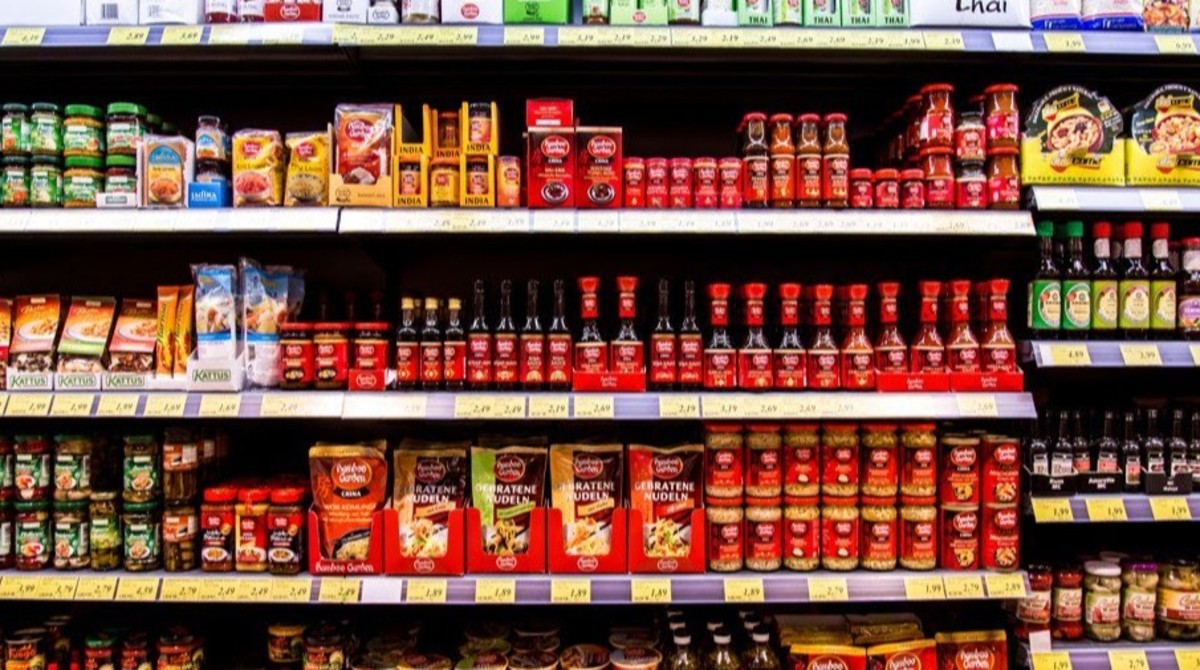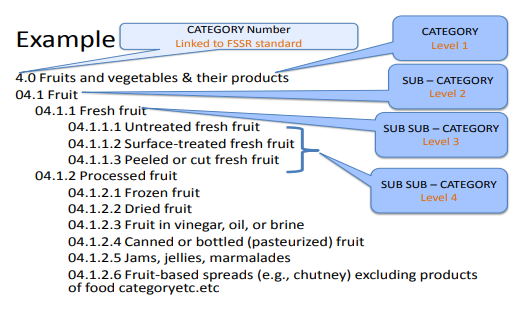Indian Food Code - Food Categorization System (FCS) of India
July 19, 2022

On May 11, 2012, The Food Safety and Standards Authority of India (FSSAI) presented a Food Classification System (FCS) for all food items secured by the Food Safety and Standards Guidelines, 2011. Under the proposed FCS, FSSAI has categorized food items into classes and subclasses, with particular codes. Some restrictive items are additionally included. The coding framework depends on the Codex structure to ensure consistency among household and universal foods.
In the perspective of India's commitment to the World Trade Organization, FSSAI has drafted a Food Categorization System (FCS), the Indian Food Code, in assent with the Food Categorization System adopted in Codex General Standard for Food Additives (GSFA).
This framework will help in methodical licensing of the service sector, where all FBOs, like, retailers, transporters, and storing and warehousing agents, will be required to simply fill in the main categories which are relevant to them. This categorization system will also help FSSAI to maintain a database of FBOs and the products manufactured by them.
The Need for a Food Categorization System
Regulatory systems all around the world have been set up to accomplish the goal of ensuring food safety and the security of consumer interests. Both these goals necessitate that regulators inspect the data on different food safety and regulatory aspects through the Food Chain. Due to the vast variety of food items that are being consumed, the areas in which they are consumed, and the population associated, it becomes arduous to track the data on the basis of individual items of food. Aside from the sheer volume of data, the issue gets additionally aggravated by the use of different dialects, languages and regional variations.
The preparation of reliable data on food requires exact terminology and a detailed description of foods. Even data of good quality can lead to errors if they are derived from foods that are not clearly defined. In addition, it is troublesome to compare information on foods or to comprehend or contrast nutritional status, consumption patterns, and risk analysis profiles, for various areas, states or people, without a sound depiction of foods in databases.
To objectively analyse the relevant data, regulators have used the categorization approach, where groups of similar products are clubbed together as one category. This category is used as the basic unit for capturing information and driving decision making in regulatory frameworks.
To sum it up, a Food Categorization System is essential as it
Provides clarity to all stakeholders including enforcement agencies.
Provides predictability, certainty and direction through cataloguing the various food products in categories in a hierarchical manner.
Enables easy Navigation by providing information in a clustered and clutter-free manner.
Provides a direction & space for future regulatory developments
The Categorization System is Guided by the Following Principles
Expandability -The FCS should be planned and built in such a way that every category number can be used as a code, especially for the purpose of licensing. The code needs to be expandable to cover new additions of items or classifications in future.
Scientific, Simplicity and Clarity - FCS should be simple to understand, based on substantial scientific principles and should be able to provide clarity to both the regulator as well as other stakeholders.
Dual purpose for National and International regulatory framework -
FCS will be intended to such an extent that it is in congruity with recent advancements in the areas of food categorisation with the aim of aiding national as well as international regulators
How are the Foods Categorized?
The Indian Food Categorization System is built around the 18 main categories, which includes category 1-16 of different types of food. Category 17 will include food products which can’t be placed in categories 1-16 and Category 99 has been created to include substances added to food, such as vitamins, minerals, additives etc. It is based on 4 level structure i.e. a. Level 1: Main Category b. Level 2: Sub Categories forming part of the main category c. Level 3: Sub-sub Categories, forming part of a sub-category d. Level 4: Sub-sub categories or products, forming part of a sub-sub category.

Below are listed categories from the Indian Food Categorization System-
Dairy products and analogues
Fats and oils, and fat emulsions
Edible ices, including sorbet
Fruits and vegetables (including mushrooms and fungi, roots and tubers,
fresh pulses and legumes and aloe vera), seaweeds, and nuts and seeds
Confectionery
Cereals and cereal products are derived from cereal grains, roots and
tubers, pulses, and legumes (fresh pulses and legumes are covered in category 4.2)
Bakery products
Meat and meat products, including poultry and game
Fish and fish products, including molluscs, crustaceans, and echinoderms
Eggs and egg products
Sweeteners, including honey
Salts, spices, soups, sauces, salads and protein products
Foodstuffs intended for particular nutritional uses
Beverages, excluding dairy products
Ready-to-eat savories
Prepared Foods/dishes including Composite foods
Products not covered in categories 1-16
Substances are added to food that is ‘not for direct consumption as food’ (category 99).
Also Read - Understand Everything About Food Labels In 9 Minutes
Get Regulatory Compliant Food Labels in under 5 Minutes!
REFERENCES -
https://foodsafetyhelpline.com/why-there-was-a-need-for-a-food-categorisation-system-fcs/
Indian Food Code, FSSAI https://old.fssai.gov.in/portals/0/pdf/INDIAN_FOOD_CODE(25-06-2012).pdf

Rashida Vapiwala (Founder at LabelBlind®, Food Label Specialist, Ph.D (Food Science and Nutrition))
Rashida is passionate about solving problems for the food industry using technology. She loves creating tech-led solutions in the space of Nutrition.
